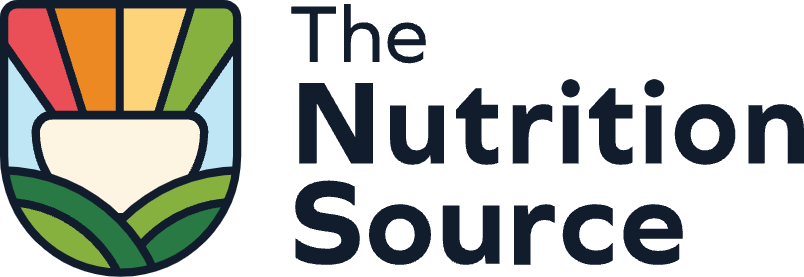Scientific research is costly, upwards of a seven-figure amount for the most intensive study designs such as the gold standard clinical trial. Expenses include administrative and investigator staffing, data collection, site fees, reimbursement to study participants, and more. If there is a lack in government funding, academic institutions conducting research may rely on other funding sources such as grants, public donations, or private donations, sometimes from industry. However, a concern with industry funding is a potential influence on study outcomes, even if unintended.
Why Funding Bias Matters
Investigations have found that there is a significant relationship between industry funding and research outcomes. When outcomes tip in favor of the sponsoring industry, this is called “funding bias.”
One study detected that research articles sponsored exclusively by food and beverage companies were 4-8 times more likely to have conclusions favorable to the financial interests of the sponsoring company than articles that were not sponsored by food or beverage companies. A subsequent comprehensive review by the National Academy of Sciences (NAS) examining sponsor influences on the quality and independence of health research cited that industry-sponsored studies were about 30 times more likely than non-industry sponsored studies to report statistically significant findings in favor of the sponsor.
The NAS review also found that food-industry funded studies were more likely to focus on micronutrients or food components rather than on whole diets or dietary patterns. This could have commercial interests for companies that produce and sell food products showcasing a specific nutrient; whereas there may be less profitability when studies show a benefit from a more holistic dietary pattern.
Funding bias exists even as scientists insist that funding does not influence their analysis and conclusions. Industry-funded studies may undergo the same peer-review process as other studies and may be published in popular journals. But a downside to this type of funding is a potential loss of trust and credibility. The high amount of research sponsored by industry may cause health professionals and the public to lose confidence in basic dietary advice.
In addition to bias that favors industry interests, critics of industry-funded research point out another risk in which sponsorship may influence the choice of research priorities, potentially distracting from relevant topics in public health.
Strategies to Maintain Scientific Integrity
Strategies to counteract the issue of funding bias in published articles include listing a full disclosure of funding sources and all ties to industry that will allow the assessment of potential biases, increasing funding for independent research, and implementing strict guidelines to regulate interactions of research institutes with industry. If the conclusions of an industry-funded study are replicated by other non-industry-funded studies, this may help to increase credibility of the findings. The goal of the scientist is to maintain scientific integrity and public trust as much as possible.
Defining conflicts of interest
The National Academy of Medicine defines conflicts of interest (COI) as circumstances that create a risk that professional judgements or actions regarding a primary interest will be unduly influenced by a secondary interest. Starting in the mid-1980s, there was increasing concern about the impact that COI could have on the objectiveness and trustworthiness of scientific research. Some examples of COI that a study author might have include:
- Receiving funding from an industry sponsor with a financial interest in the outcome of the study
- Employment by a study sponsor
- Paid consulting arrangements with industry sponsors
- Ownership of stock related to one’s research and intellectual property rights
Having a COI does not necessarily diminish the research but can create a possible bias (favoring one study outcome more than another, whether intentionally or unintentionally) or the perception of bias. An example is a scientist who is receiving significant financial funding from an industry and making decisions related to the study design, data analysis, or interpretation of the results in favor of industry interests. Another example is an industry sponsor who may alter the study design or hide data in order to promote corporate interests. A scientist may not be aware that they are making choices that tend to slant the outcomes of a study in a particular direction.
Because of the relationship between industry funding and research outcomes, COI disclosures from authors are now requested in a growing number of scientific journals. A COI statement provides information on the funding sources and other possible competing interests of the authors of a study. However, a COI statement will only appear if an individual journal requires it or if the authors voluntarily choose to disclose it. One study found that 96% of 227 scientific peer-reviewed journals required COI disclosure and 92% required disclosure of the funding source.
In April 2017, the National Institutes of Health and National Library of Medicine enforced a new initiative with PubMed, their main database of abstracts from medical and life sciences journals. The initiative listed authors’ COI statements underneath the abstract. The change was spearheaded by numerous members of the scientific and medical community, senators, and the Center for Science in the Public Interest. Previously the COI statement was included only in the full-length version of the article, accessible exclusively to paying subscribers. Though the abstracts on PubMed are free to view, many people do not have additional access to view the full article or they simply prefer to read an abbreviated version of the study. In these cases, a COI disclosure from study authors would not be viewable. The purpose of the new protocol was to increase transparency and help readers analyze the quality and credibility of published research.
The Nutrition Source’s Criteria for Selection of Studies
As one of the core practices guiding our approach to content creation, The Nutrition Source conducts literature searches and aims to present the best available evidence on a topic. Our choice of inclusion may exclude popularly cited articles, even with well-established scientific protocols, if they do not meet the following criteria:
- The study lists full disclosure of conflicts of interests by the authors.
- If a study is sponsored or funded by an industry, the industry must not play a role in the study design, the review process, or writing of the manuscript.
- If an author(s) has previously received funds from an industry for purposes other than that related to the present study itself, the paper may be included.
- The study author(s) does not have employment or an advisory/board member role with the industry that is funding the study.
- The study has a good design. Specific questions that are considered to determine a study’s quality include:
- Does the study have statistical power, such as with a large sample size of people?Is the current body of evidence on the subject thoroughly reviewed?
- Are the conclusions of the study supported by the data and do they relate to the stated purpose of the study?
- What is the significance of the results and to whom do they apply?
- Are the results compared to those of other studies on the same subject?
- Are limitations of the study design acknowledged, and if so, what impact might they have on the results?
About This Page
Written by: Nancy Oliveira, MS, RD, LDN, CDCES
Reviewed by: Walter C. Willett, MD, DrPH
Updated: July 29, 2025
View page history
- July 29, 2025
- Copyedited and published
- January 30, 2023
- Content and evidence reviewed
- Study selection criteria defined
Sources
View source list
- Center for Science in the Public Interest. PubMed to Include Conflict-of-Interest Statements with Study Abstracts. April 18, 2017.
- Daou KN, Hakoum MB, Khamis AM, Bou-Karroum L, Ali A, Habib JR, Semaan AT, Guyatt G, Akl EA. Public health journals’ requirements for authors to disclose funding and conflicts of interest: a cross-sectional study. BMC public health. 2018 Apr 23;18(1):533.
- Fabbri A, Lai A, Grundy Q, Bero LA. The influence of industry sponsorship on the research agenda: a scoping review. American journal of public health. 2018 Nov;108(11):e9-16.
- Lesser LI, Ebbeling CB, Goozner M, Wypij D, Ludwig DS. Relationship between funding source and conclusion among nutrition-related scientific articles. PLoS medicine. 2007 Jan;4(1):e5.
- National Academies of Sciences, Engineering, and Medicine. 2023. Sponsor Influences on the Quality and Independence of Health Research: Proceedings of a Workshop. Washington, DC: The National Academies Press.
- IOM (Institute of Medicine). 2011. Clinical Practice Guidelines We Can Trust. Washington, DC: The National Academies Press.
- Nestle M. Corporate funding of food and nutrition research: science or marketing?. JAMA Internal Medicine. 2016 Jan 1;176(1):13-4.
- Resnik DB, Konecny B, Kissling GE. Conflict of interest and funding disclosure policies of environmental, occupational, and public health journals. Journal of Occupational and Environmental Medicine. 2017 Jan 1;59(1):28-33.
Explore More

There are many different types of studies, and each has distinct strengths and weaknesses. Learn more about cohort studies, trials, and other types of research.

